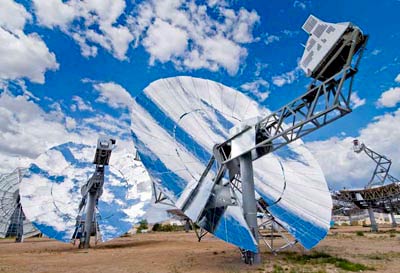(formed by New Jersey-based private equity firm
Energy Capital Partners,
a group of high-rolling
Goldman-Sachs investors
who seem to buy and
sell power generation plants,
gas pipelines, dams, coal reserves
-- and soon carbon credits --
like the rest of us trade used clothing)
wants almost 8,000 acres of pristine desert
to construct a massive array
of photovoltaic panels.
Luckily, whenever there is such a large assault on our last wilderness
by any developer, the environmental groups send in the white knights! Ughhhh…were
those white knights supposed to get here today? No? Can we at least get
one environmental activist to say hello to us?
A few weeks after our site visit, we attended a local BLM scoping meeting
for the NextLight Silver State South project. There seemed to be plenty
of empty chairs to choose from. Just where were all those environmentalists?
We and a local group, the Amargosa Conservancy, were the only ones speaking
up about loss of tortoise lands. An off-roader also made a pubic comment
about how three
Have all of them really decided that destroying
large tracts of wilderness to make room
for large industrial energy developments
are the only way to save humanity
from global warming?
One by one, the big
name environmental organizations
fell like Dominos.
trails were going to be blocked by the massive project, and he too said the tortoises needed protection here. While many environmentalists are the first ones to point fingers at off roaders for being the cause of so much ecological destruction, we are seeing a situation where off roaders are being better stewards of the land than the good ole’ Sierra Club! Yes, there are a couple of OHV trails near the site, but the riders stay on the trails and stay off the tortoise habitat. In these strange times, our allies are shifting away from mainstream environmentalists. So a couple of ATV riders said, “Leave our trails open, protect the desert tortoises

